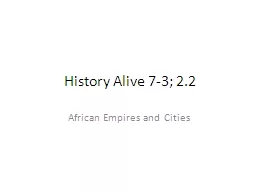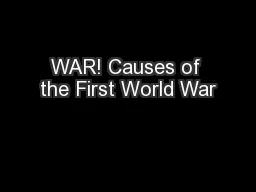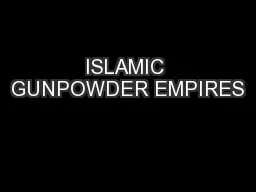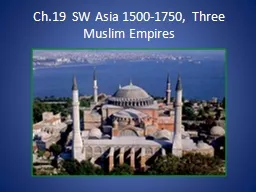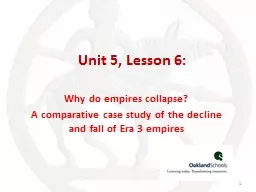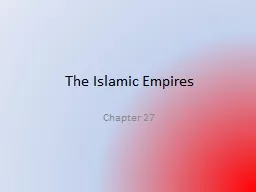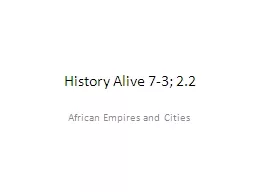PPT-History Alive 7-3; 2.2 African Empires
Author : haroublo | Published Date : 2020-08-27
and Cities 22A Iron technologys Impact on W est Africa Before the Discovery of Iron Most people were huntergatherers Tools and weapons were made of bone and stone
Presentation Embed Code
Download Presentation
Download Presentation The PPT/PDF document "History Alive 7-3; 2.2 African Empires" is the property of its rightful owner. Permission is granted to download and print the materials on this website for personal, non-commercial use only, and to display it on your personal computer provided you do not modify the materials and that you retain all copyright notices contained in the materials. By downloading content from our website, you accept the terms of this agreement.
History Alive 7-3; 2.2 African Empires: Transcript
Download Rules Of Document
"History Alive 7-3; 2.2 African Empires"The content belongs to its owner. You may download and print it for personal use, without modification, and keep all copyright notices. By downloading, you agree to these terms.
Related Documents

